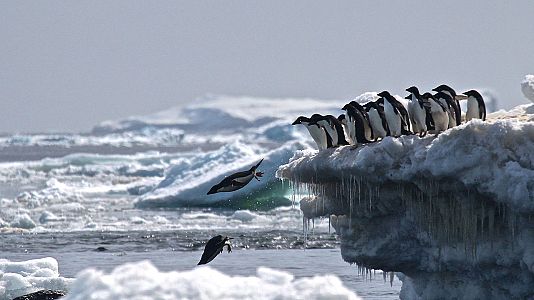Some 1.5 million penguins have been found on the remote Danger Islands.
A secret “supercolony” of Adelie penguins has been discovered on a remote chain of islands off the Antarctic Peninsula, surprising scientists who hadn’t known the area was an important habitat for the species.
The 1.5 million penguins were found on the Danger Islands off the Antarctic Peninsula’s northern tip.
Research published this week in the journal Scientific Reports explains that the discovery was made after giant patches of penguin excrament, or guano, showed up in pictures taken from space.
The finding prompted scientists to arrange an expedition to the islands in December 2015, where they found hundreds of thousands of birds nesting in the rocky soil.
Researchers used a drone that took photos every second to count the penguins, eventually stitching the images together into a huge collage to get a comprehensive picture.
More than 750,000 breeding pairs were found, researchers said, explaining that this is more than the rest of the Antarctic Peninsula region combined.
It included the third- and fourth-largest Adelie penguin colonies in the world.
The study, authored by scientists from institutions including the US-based Woods Hole Oceanographic Institution and the UK’s Oxford University, said the finding proves that the Danger Islands are a “seabird hotspot.”
"Not only do the Danger Islands hold the largest population of Adélie penguins on the Antarctic Peninsula, they also appear to have not suffered the population declines found along the western side of Antarctic Peninsula that are associated with recent climate change," said the study’s co-author Michael Polito.
Scientists hope the finding will provide valuable evidence to support proposed Marine Protected Areas near the Antarctic Peninsula.












